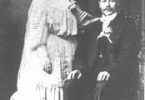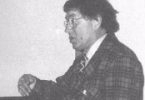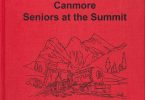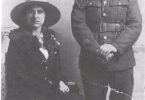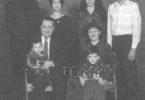I was born in South London, England, in 1917, only son and oldest of three children. Following my early education at boarding school in Cambridge, I enrolled in medical studies at London University, graduating in 1941, in the middle of the London Blitz. We were celebrating our graduation rather well, ambling along a London street, when the air raid siren sounded. A passing policeman remarked, “Hear, hear, young sirs; the siren has gone off and you should be underground.” Our reply was, “That’s all right, officer. Our umbrellas will catch the bombs!”
When I then joined the British Army Medical Service, I was to be posted to Egypt. However, the Mediterranean Sea route was off limits to ship traffic. So, our journey, which began in Glasgow, took us in a convoy down the west coast of Africa, around the Cape of Good Hope, disembarking in Durban, South Africa. There I stayed for six weeks, waiting for a cargo ship to take me up the east coast to Mombasa. I then travelled overland to the Nile and downriver to Khartoum, the capital of Sudan, the end point of a remarkable journey. I never did reach Egypt but spent two and a half years in Sudan, learning to speak and write in Arabic, practicing my medical knowledge on the local people, ever watchful for signs of epidemics, particularly yellow fever. Eye disease was commonplace, especially “trachoma”, sparking my interest in ophthalmology.
When I returned to London in 1944, I spent my two months’ leave at Morfield’s Eye Hospital, then joined the Royal Air Force as an “eye specialist.” In the fall of 1945, I was sent to Germany to operate a mobile eye unit, caring for the personnel of the occupation forces. Returning once again to London, two years later, I undertook the academic training to confirm what I had already been practicing. I recall working alongside Dr. Ridley, the inventor of the intraocular lens which was eventually used in cataract surgery. After completing my studies in ophthalmology, I was encouraged by a classmate to travel to Canada and “have a look.” This I did, returning in 1951 to Moose Jaw for a year, and then on to Calgary where I was associated with the Ear, Nose, Throat and Eye Clinic, situated in the old Greyhound Building.
After stints at the Holy Cross and Calgary General Hospitals, I became head of the Ophthalmology Department at Foothills Hospital and professor in the Medical Faculty of the University of Calgary, posts I held for twenty years. I very much enjoyed my involvement in planning and curricular development. When I retired from Foothills in 1987, I continued my private practice until my move to Canmore in 1990.
My first wife, Rosemary, and I had four children, the first born in Sudan, the second in London, and twins in Calgary. Subsequently, we adopted two more children but our marriage ended in divorce in the early 1970’s. During that period, I was hiking and skiing in the Lake O’Hara area and falling in love with the mountains.
Through friends, I met Jean Kelly, who had been widowed for a few years. Jean had originally come from Toronto in 1946 to nurse in the Banff Hospital, had married and lived in Banff for twenty years. In 1972, Jean bought an A-frame house on Spring Creek Crescent in Canmore. We laughingly remark that I married her for her A-frame, the “dowry” she brought to our marriage in 1977.
For the next twelve years, we lived in Calgary, weekending in Canmore. When the Canmore Hospital Board heard I was in town, I was invited to establish a Saturday eye clinic, first at the old hospital on the hill, moving to the new one when it was built. I also ran a clinic every second weekend at the Banff hospital. Jean was my nurse/ receptionist, and together we became acquainted with many local residents. In 1989, we built a new house in Rundleview, beginning a fulltime life in Canmore. We continued to hike and ski and maintain our clinic hours until 1998 when a sudden stroke ended these involvements. However, I’ve kept up with my bridge games and newest hobby of machine quilting.
Jean and I have found Canmore to be the ideal place to live, with beauty around us, access to outdoor activities, and the friendliness of a small town. We especially value the many friends we’ve made over the years through our work at the eye clinics in the Bow Valley.
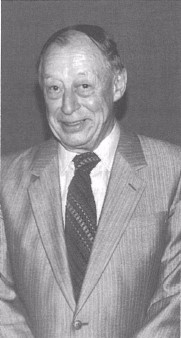
Max Shafto
In Canmore Seniors at the Summit, ed. Canmore Seniors Association, 2000, p. 258-259.

